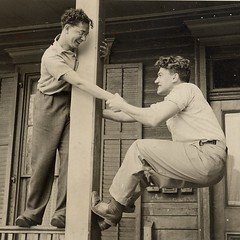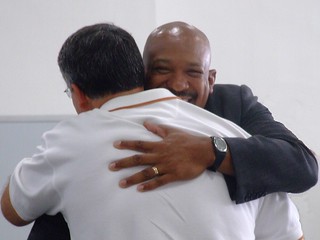 Social investing: One of the most important parts of the puzzle for creating a world that works for everyone.
Social investing: One of the most important parts of the puzzle for creating a world that works for everyone.
What if that’s not true?
In fact, what if it is not only not true – what if the current state of social investment is actually part of the problem? What if the way we resource social change is a big part of why change is so frustratingly slow and incremental? And even worse – what if that current state of social investment is, in fact, a perpetuation of the very world that social change advocates are fighting against?
Competition for scarce resources leading to fear and mistrust, preventing people of similar passions from truly cooperating to create real change.
Power dynamics and cultural expectations about those who have money vs. those who do not.
Transactional silent financial partners pursued solely for their dollars (and please keep your wisdom to yourself – this is MY idea, don’t tell me how to do it!).
If this is the us-and-them world we are all working to move beyond, then it makes no sense to perpetuate that world of us-and-them in the way we resource that work. Martin Luther King’s words about using such inherently counterproductive methods comes to mind…
“I am not going to allow anybody to pull me so low as to use the very methods that perpetuated evil throughout our civilization.”
If not the current funding systems, then what?
For Creating the Future, this is not an academic exercise. Within the next year, we will be seeking meaningful relationships with true partners, to plan and ramp up efforts to accomplish our mission.
We know the easy route would be to enter the competitive funding market, and to then have our newly funded staff write substantive white papers about why those very funding methods go counter to being the future we want to see in our world. But there are so many things wrong with that approach it makes us dizzy – the most important being, in the words of our former office coordinator, Nick Perona, that we would “go against everything we stand for.”
So then, what would a mutually empowering, interconnected, strength-based, marriage-of-equals partnership look like in practice? What would that relationship look like if it were constructive for all parties, in all ways?
- A relationship rooted first in who all the parties are (their wisdom and experience and passion) and only then bringing to the table what the parties have (money, connections, ideas)
- A relationship rooted in trust and shared values, rooted in the gratitude and joy of all parties to the relationship
- A relationship rooted more in what is abundant for each of us than what is scarce
- A relationship that explores new ways of being together, beyond budget line items and compliance with rules – creating the future by having the relationship itself be that future right here now
- Work that is rooted in end results, with the intention of accomplishing real, palpable results together – to look back and say “Wow, something is visibly different than it was before.”
In the old fable of Stone Soup, a stranger shows a group of stingy “don’t touch my stuff” townspeople how to make soup from a stone. Putting a stone into the pot, he tells the townspeople that he will need some carrots, and they all run home and gather carrots from their gardens. The same with onions. Then herbs. Then etc. He removes the stone, and voila! Soup from a stone – and from the coming together of everyone in the town, creating something together that none of them could have done on their own.
THAT is what we will explore during these next 12 months, demonstrating every step of that exploration, and the partnerships that arise from it.
We will explore what true partnership might look like. What kinds of relationships are already creating powerful results? And what frameworks don’t yet exist, that might move the whole field towards more significant results in our communities?
We want to talk with people who have had the same questions, who are also on this quest.
We want to talk with them individually and in groups, live out loud and privately over drinks.
 This quest will be the most important test so far of our vision and values in action. And as we do in everything, we will demonstrate what that looks like in real time, so that others can learn as we are learning.
This quest will be the most important test so far of our vision and values in action. And as we do in everything, we will demonstrate what that looks like in real time, so that others can learn as we are learning.
That’s our plan. The great fun is that we have no idea what the ultimate answer will be. We just know that whatever it is, it will bring us closer to being the communities and relationships we want to see in the world.
To be notified when we have dates for those discussions, subscribe at our What’s New blog.
And please – if you know people who are already engaged in this conversation, please connect us. We have a lot to learn and a lot to explore, and the clock is ticking…

I love your intentions and especially the Stone Soup metaphor, as it re-frames the entire conversation to assume we all “have”. In my experience the underlying mental models often at play among those seeking to ‘help’ often generate a co-dependence whereby the ‘helpers’ (‘haves’) need the ‘helped’ (‘have nots’)as much as they need their benefactors. The behaviors that ensue are often short-term solutions that fail to address underlying causes and actually perpetuate reliance on aid from the outside. Who are the ‘haves’ without the ‘have nots’, and are we/they willing to give up that identity so as to co-generate solutions that give rise to self-sustaining systems?